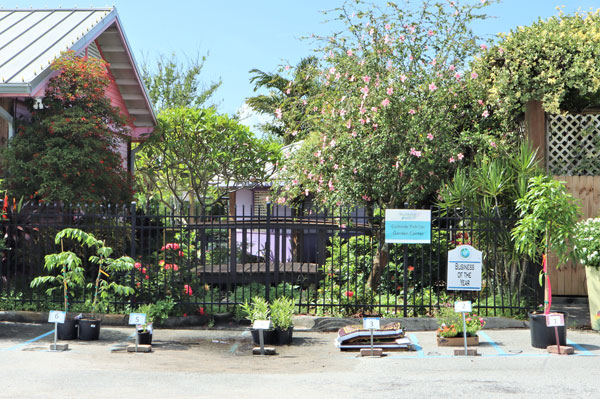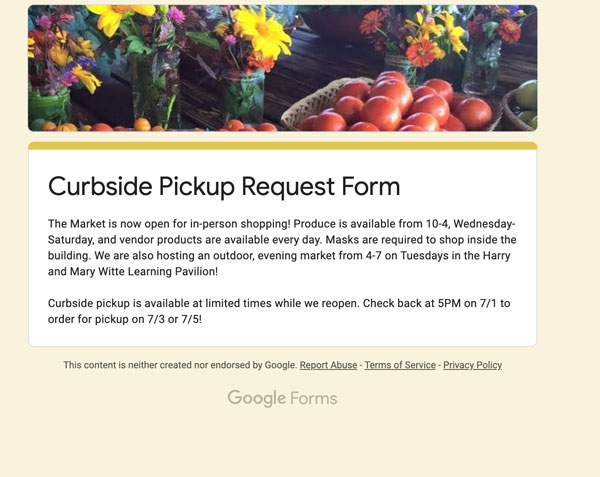8/1/2020
Rockledge Gardens Has it Dialed In
Katie Elzer-Peters
“Buy online; pick up in store” had started gaining steam before COVID-19, especially with essentials such as groceries or prescriptions, but it hadn’t, for the most part, reached the broader green industry. Statewide shutdowns changed that and garden center customers, already used to carryout food, got used to carryout plants.
Successful service starts with communicating with customers, in almost real time, what’s available and how they can get it. This communication largely takes place online, via social media, an e-commerce site, email, a Google form, or a combination thereof, so “online ordering” it is, with curbside pickup as the fulfillment system.
Seven Steps for Curbside Pickup Systems
1. Customer receives availability: Via email, social media post, visit to an e-commerce site or visit to an online order form
2. Customer places order: The monetary transaction
3. Retailer processes order: Order goes into bookkeeping and tracking system (electronic and/or paper)
4. Retailer pulls or “picks” order: Merchandise gets removed from inventory
5. Retailer stages order for fulfillment (pickup): Order moved to designated transfer location
6. Customer notified that order is ready for pickup
7. Order fulfilled: Picked up by customer
Rockledge Gardens on Florida’s central coast has dialed in both high-tech and low-tech curbside pickup systems to keep customers happy and doors (metaphorically) open. Here’s how they do it.
Start by Establishing & Documenting Processes
Aurelia Riley, Online Ordering Manager at Rockledge, says, “I remember one day early on the orders just kept piling in. I thought, ‘We need a cap. I can’t do it.’ Then I paused and decided, ‘We just need to re-think the system, document the process and set things up so we can turn an order around in a day.’ The volume forced us to streamline and create a well-oiled machine where someone could slide in and out of each role.”
Elements of documented processes
Complete process documentation must include this information:
• Required supplies
• Required SaaS (software as a service, such as a Google form or POS access)
• Required personnel
• Process checklists
 Here’s their garden center process (we’ll look at the farmers market process separately), which incorporates an e-commerce website that’s mostly hooked up to their POS system:
Here’s their garden center process (we’ll look at the farmers market process separately), which incorporates an e-commerce website that’s mostly hooked up to their POS system:
1. Order placed, garden center receives email.
2. Order processor prints two copies of the order and processes the order. To process: Name of order puller written on office copy, parking lot slot number for pickup assigned and order paper is filed. (Their hard copy file system includes, but is not limited to: Future orders to process; Orders to get called for deliveries; Orders to put in POS; Orders for later pickup.) The other copy of the orders goes into a Ziploc bag with the pickup slot number written on the bag and is given to the order puller.
3. On the retail floor: Order is pulled, puller makes any notes and radios back to office that order is ready and/or communicates about any refunds or substitutions so office can call customer; puller takes order to pickup slot.
4. In the office: When notified order is complete, adds order to POS system that generates email to alert customer order is ready for pickup and the slot number where they can find their order. In-office staff updates the back-office system of website with any notes or details about the order.
5. Orders for pickup at a later date are staged in a holding area.
This system is a combination of high-tech online POS and website “back office” systems and low-tech walkie talkies, paper, pencil and sharpies.
“We started by tracking everything online, but it quickly became apparent that we needed a piece of paper to follow the order,” said Aurelia. “Once the order is complete, we can input notes online for future reference by anyone at any time.”
Liz Riley, Managing Director for Rockledge Gardens, said they quickly learned to limit the “future pickup date” to no more than a week in advance.
“It’s too difficult to keep the plants looking top quality in the holding area for longer than that,” she said.
The Farmers Market
Here’s their farmers market process, which uses a Google form system, a robust FAQ, and some very specific terms and conditions check boxes:
1. Farmers market manager reviews availability list for what’s coming in on the day people will pick up their orders and updates the Google form, specifically called “Curbside Pickup Request Form.” Manager assigns per-item limits on drop-down boxes to control inventory. Once form goes live, the manager keeps an eye on the form and removes items once they’ve sold through.
2. Customers submit orders or “requests.” Specific language on order form states at the top, “Select the types of produce and products you wish to pick up. Produce is priced by pound or bunch. Please note the quantity of produce or products requested. If you do not want to purchase an item, leave the drop-down menu blank. We will send an invoice payable online when the order is ready for pickup. The invoice will include instructions for picking up your order.” The frequent use of “request” is intentional in setting expectations that some items might not be available.
3. Staff works on pulling order. Produce goes in brown paper bags with customer name and identification ⅓, ⅔, 3/3 and is placed in a cooler.
4. Once order is filled, staff sends the customer a payment invoice via Stripe and an email detailing that the customer order is ready for pickup with instructions for pickup. Numbering bags or trays helps customers ensure they’ve retrieved everything they ordered.

Train Staff
Once your process is set up, it’s time to train staff. Go over every step with them. Enlist them to help communicating the process with customers, if possible.
Liz says, “One of our staff members, our Events & Marketing Director Jessica Castillo—on her day off, no less—made a video for Facebook to show customers exactly what the curbside pickup process looked like.”
(You can view that video here tinyurl.com/rockledgegc.) In doing so, she demonstrated that she had a thorough knowledge of the process, even if that wasn’t the point of the video.
And it might seem like a no-brainer, but anytime you start something new, it’s critical to alert staff. Go-getters might try to fulfill something different or new without asking for clarification, resulting in giving customers the wrong item.
“You can never over-communicate—with anybody,” Liz says.
Control Quality
Tricia Johnson, Farmers Market Manager, says that, throughout their experience moving to curbside pickup, “We’ve talked a lot about the experiential vs. commodity market and how that affects curbside pickup. For example, if I have a halfway decent-looking plant on the floor and someone chose to purchase it themselves, it’s a different situation than if I give someone a wrinkly tomato that they did not select themselves.”
Some people want to select everything themselves. “Curbside pickup is not necessarily the best solution for those people. You also might need to adjust your product mix so that what you’re delivering lives up to people’s expectations,” said Tricia.
Staff training for quality control is also essential.
Clearly Communicate with Customers
Speaking of communication, you can’t really over-communicate with customers either. Detailed FAQs on the website, along with detailed confirmation and “order is ready for pickup,” help head off problems before they start. Regularly update your open and closed hours, safety precautions and safety requirements (such as mask requirements) on social media listings, Google listings and website the minute a policy or open time changes.
“We actually found that putting tons of pictures of products on social media, as well as doing Facebook and Instagram lives, helped customers see what they were going to get before they came to get it, which also helped to set expectations,” Liz notes.
Tweak and Refine
Rockledge Gardens started with a Google form and moved to e-commerce. They started calling people when their orders were ready and moved to emailing. It’s fine to refine. The goal is to streamline, document and keep iterating. Customers not only expect it, but they’ll be grateful to you for continuing to provide something they’ve clearly deemed essential: plants. GP
Katie Elzer-Peters is owner of The Garden of Words, LLC, a green-industry digital marketing agency. Contact her at Katie@thegardenofwords.com.